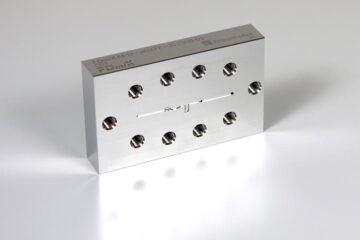First Compact Method for All-Optical 3R- and Phase Generation

<strong>Background</strong><br>
Compact state of the art 3R-regeneration systems for an optical phase-coded data signal are not capable of enhancing the quality of phase information. Since DPSK systems offer 3 dB better performance, phase-coded systems and thus phase regeneration would be favourable in all-optical networks. <br><br> <strong>Technology</strong><br> This technology allows the entire, all-optical regeneration of DPSK and other phase-coded optical data signals under a conversion of the carrier wavelength. The compact design of the regeneration module opens the possibility to easily integrate it into an optical sub-system avoiding fiber technology. The method also offers the possibility of converting the phase-coded optical signal into an amplitude-coded optical signal. This can be operated independently.<br><br> <p><strong>Benefits</strong><br> <ul> <li>All optical phase regeneration</li> <li>Compact design possible</li> </ul> <p><strong>IP Rights</strong><br> German Patent DE 10 2005 037 828</p> <p><strong>Origin</strong><br> Technische Universität Berlin, Germany</p>
Further Information: PDF
ipal GmbH
Phone: +49 (0)30/2125-4820
Contact
Dr. Dirk Dantz
Media Contact
All latest news from the category: Technology Offerings
Newest articles

For microscopic organisms, ocean currents act as ‘expressway’ to deeper depths
New research shows how tiny plant-like organisms hitch a ride on ocean currents to reach darker and deeper depths, where they impact carbon cycling and microbial dynamics in the subtropical…

FDmiX: Fast, robust series production of nanoparticles
Nucleic acid-based medications such as mRNA vaccines are opening up new therapeutic approaches. These active ingredients must be enclosed inside nanoparticles to ensure that they get to where they are…

Sensor measures oxygen content of breath
Oxygen saturation in the blood that is either too low or too high can cause physical harm or even death. This is why patients’ oxygen concentraions are monitored continuously in…

















